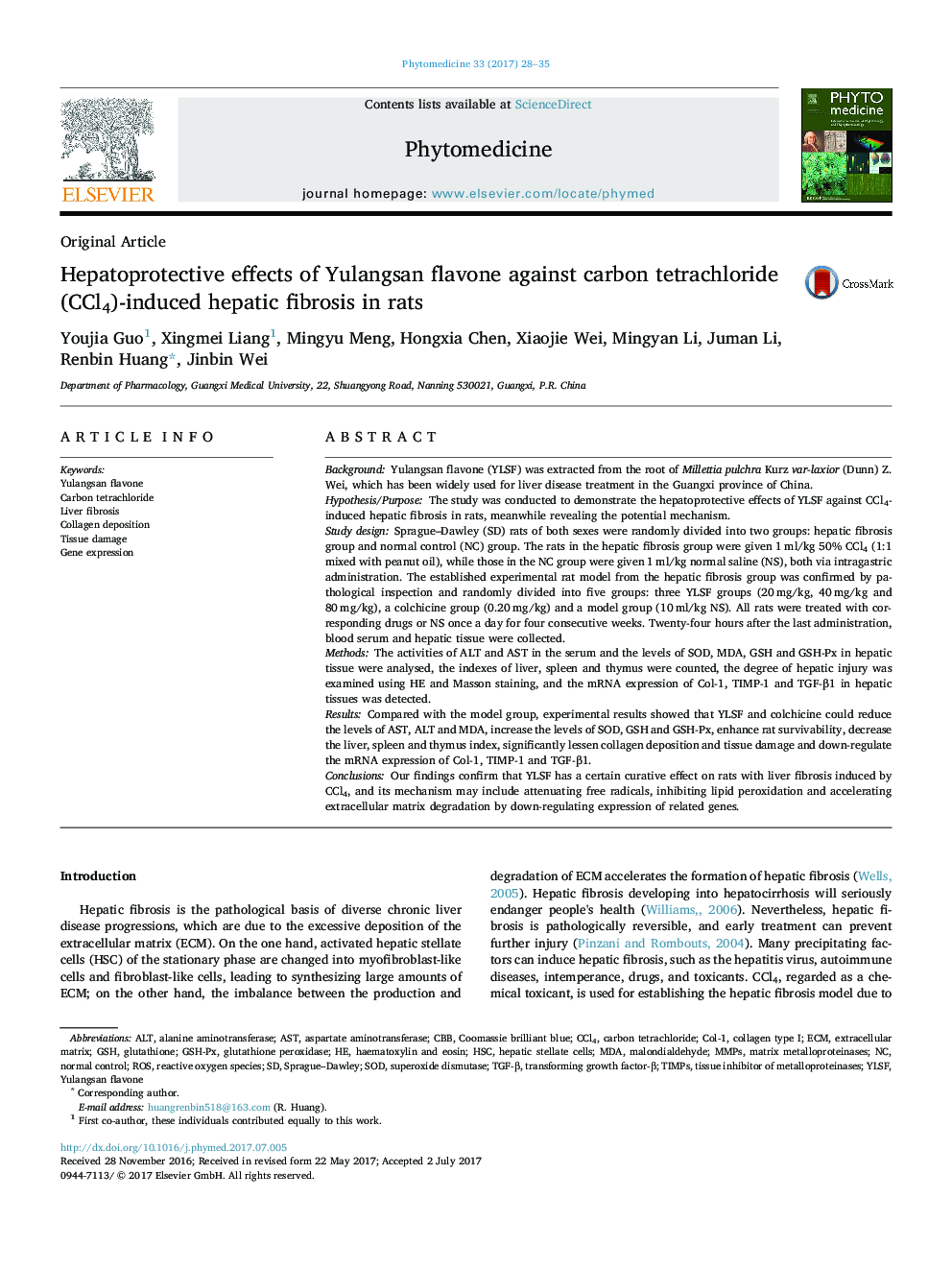| کد مقاله | کد نشریه | سال انتشار | مقاله انگلیسی | نسخه تمام متن |
|---|---|---|---|---|
| 5549273 | 1556686 | 2017 | 8 صفحه PDF | دانلود رایگان |

BackgroundYulangsan flavone (YLSF) was extracted from the root of Millettia pulchra Kurz var-laxior (Dunn) Z. Wei, which has been widely used for liver disease treatment in the Guangxi province of China.Hypothesis/PurposeThe study was conducted to demonstrate the hepatoprotective effects of YLSF against CCl4-induced hepatic fibrosis in rats, meanwhile revealing the potential mechanism.Study designSprague-Dawley (SD) rats of both sexes were randomly divided into two groups: hepatic fibrosis group and normal control (NC) group. The rats in the hepatic fibrosis group were given 1â¯ml/kg 50% CCl4 (1:1 mixed with peanut oil), while those in the NC group were given 1â¯ml/kg normal saline (NS), both via intragastric administration. The established experimental rat model from the hepatic fibrosis group was confirmed by pathological inspection and randomly divided into five groups: three YLSF groups (20â¯mg/kg, 40â¯mg/kg and 80â¯mg/kg), a colchicine group (0.20â¯mg/kg) and a model group (10â¯ml/kg NS). All rats were treated with corresponding drugs or NS once a day for four consecutive weeks. Twenty-four hours after the last administration, blood serum and hepatic tissue were collected.MethodsThe activities of ALT and AST in the serum and the levels of SOD, MDA, GSH and GSH-Px in hepatic tissue were analysed, the indexes of liver, spleen and thymus were counted, the degree of hepatic injury was examined using HE and Masson staining, and the mRNA expression of Col-1, TIMP-1 and TGF-β1 in hepatic tissues was detected.ResultsCompared with the model group, experimental results showed that YLSF and colchicine could reduce the levels of AST, ALT and MDA, increase the levels of SOD, GSH and GSH-Px, enhance rat survivability, decrease the liver, spleen and thymus index, significantly lessen collagen deposition and tissue damage and down-regulate the mRNA expression of Col-1, TIMP-1 and TGF-β1.ConclusionsOur findings confirm that YLSF has a certain curative effect on rats with liver fibrosis induced by CCl4, and its mechanism may include attenuating free radicals, inhibiting lipid peroxidation and accelerating extracellular matrix degradation by down-regulating expression of related genes.
119
Journal: Phytomedicine - Volume 33, 15 September 2017, Pages 28-35